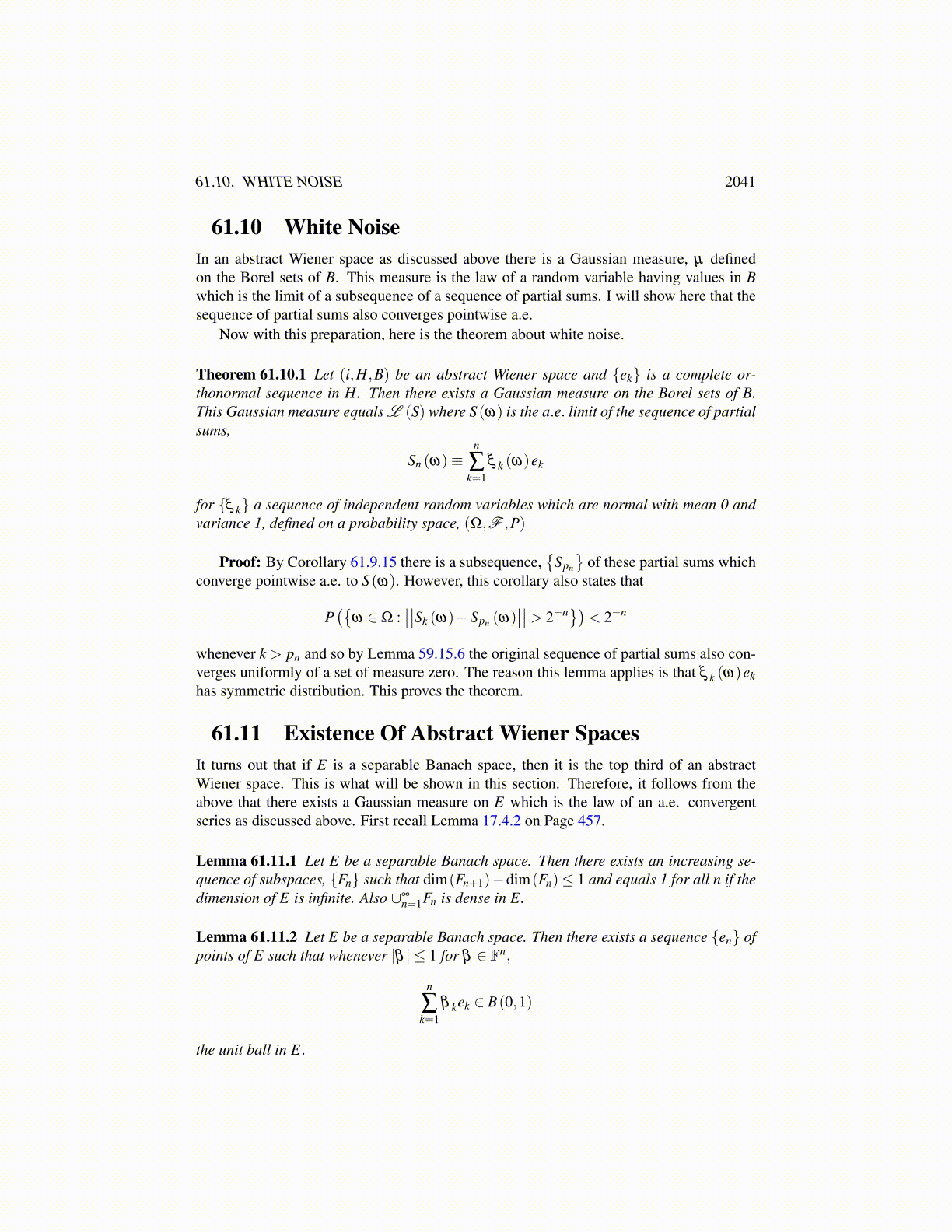
61.9. ABSTRACT WIENER SPACES 2041
is also normally distributed and has mean 0 and variance equal to
pn
∑k=1
(ek,v)2H .
Then it seems reasonable to suppose
E(eit f◦S) = lim
n→∞E(eit f◦Spn
)= lim
n→∞e−t2
∑pnk=1(ek,v)
2H
= e−t2∑
∞k=1(ek,v)
2H
= e−t2|v|2H (61.9.45)
the characteristic function of a random variable which is N(
0, |v|2H)
. Thus at least formally,
this would imply for all f ∈ B′, f ◦S is normally distributed and so if µ = L (S) , then byLemma 61.7.3 it follows µ is a Gaussian measure.
What is missing to make the above a proof? First of all, there is the issue of the sum.Next there is the problem of passing to the limit in the little argument above in which thecharacteristic function is used.
First consider the sum. Note that QnX (ω) ∈ H. Then for any n > pm,
P({
ω ∈Ω :∣∣∣∣Sn (ω)−Spm (ω)
∣∣∣∣> 2−m})
= P
({ω ∈Ω :
∣∣∣∣∣∣∣∣∣∣ n
∑k=pm+1
k2 (X (ω) ,ek)E ek
∣∣∣∣∣∣∣∣∣∣> 2−m
})
= P
({ω ∈Ω :
∣∣∣∣∣∣∣∣∣∣ n
∑k=pm+1
ξ k (ω)ek
∣∣∣∣∣∣∣∣∣∣> 2−m
})(61.9.46)
Let Q be the orthogonal projection onto span(e1, · · · ,en) . Define
F ≡{
x ∈ (Q−Qm)H : ||x||> 2−m}Then continuing the chain of equalities ending with 61.9.46,
= P
({ω ∈Ω :
n
∑k=pm+1
ξ k (ω)ek ∈ F
})
= P({
ω ∈Ω :(ξ n (ω) , · · · ,ξ pm+1 (ω)
)∈ F ′
})= ν
({x ∈ H :
((x,en)H , · · · ,(x,epm+1)H
)∈ F ′
})= ν ({x ∈ H : Q(x)−Qm (x) ∈ F})= ν
({x ∈ H : ||Q(x)−Qm (x)||> 2−m})< 2−m.